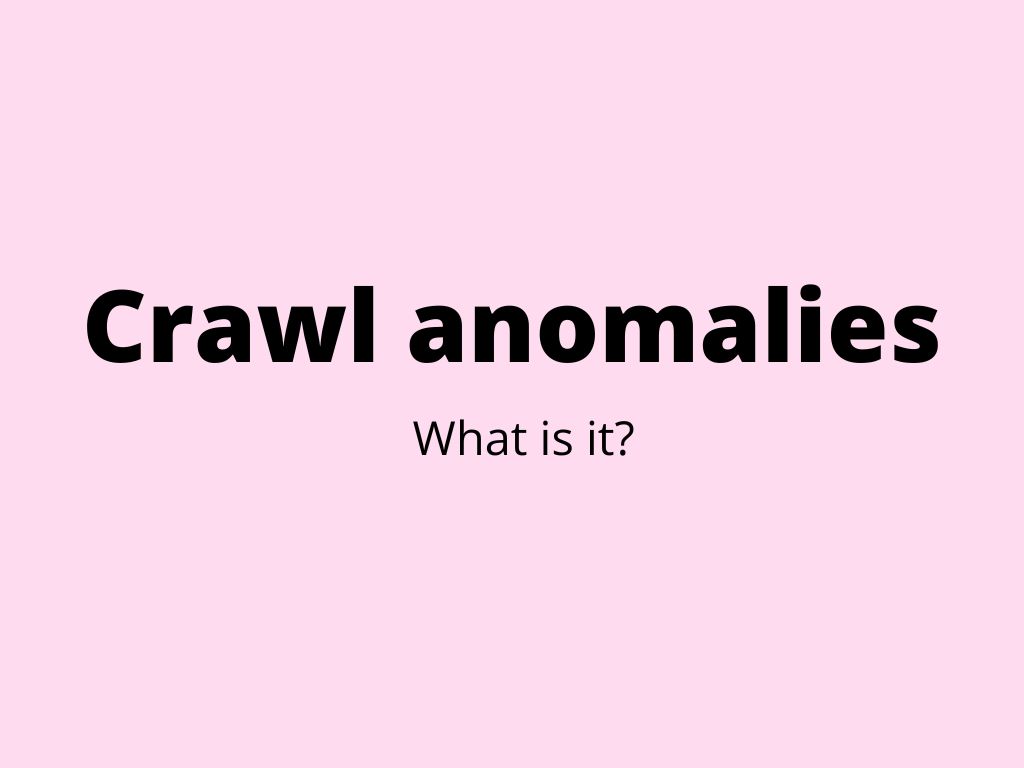
Crawl anomalies – what is it?
In an era where digital presence is paramount, the subtle signals that hint at underlying issues within a website’s architecture can be both enlightening and, if ignored, deeply detrimental. Among these signals, crawl anomalies—a term coined by Google’s Search Console – serve as a canary in the coal mine for webmasters and SEO specialists alike. These anomalies, often manifesting as unexpected HTTP response codes (typically in the 4xx or 5xx range), are not merely trivial errors but symptomatic of deeper systemic challenges that demand a comprehensive technical assessment.
At its core, a crawl anomaly occurs when Google’s crawler attempts to access a URL and, instead of receiving a standard response, encounters an unforeseen error. The official guidance from Google underscores this phenomenon with a terse yet critical message: “When loading this URL, an unexpected anomaly occurred. This could be due to a 4xx or a 5xx response code. Try loading the page with the URL Inspection tool and check for any issues. The page was not indexed.” While the language appears straightforward, the implications are multifaceted. A server returning a 4xx error might indicate issues ranging from incorrectly configured redirects and broken links to authentication problems. Conversely, a 5xx error often points to server-side malfunctions or temporary outages—each scenario carrying its own set of troubleshooting and remedial approaches.
Deep analysis of crawl anomalies reveals that these errors are neither rare nor uniformly understood. For a webmaster, recognizing and resolving such issues is not only crucial for maintaining the integrity of a website but also for ensuring optimal visibility on search engines. In many cases, these anomalies signal intermittent issues that can affect user experience and, by extension, the site’s search ranking. A meticulously crafted technical audit, sprung from decades of industry insight, involves cross-referencing server logs, employing the URL Inspection tool, and even leveraging third-party analytics to pinpoint the root cause. The troubleshooting process, while rigorous, is bolstered by continuous updates from Google’s Help resources, including detailed guides on index inclusion status and search results management.
The journey to resolving crawl anomalies often requires a blend of technical acumen and strategic foresight. Experienced professionals with decades of hands-on exposure understand that not all errors are created equal. Some crawl anomalies stem from transient glitches—perhaps due to server overload at peak times—while others may expose chronic issues such as misconfigured DNS records or improper implementation of HTTP status codes. The nuanced approach to rectifying these errors involves a sequence of well-defined steps: verifying the correctness of the URL structure, ensuring that server configurations adhere to best practices, and routinely monitoring web performance metrics. In doing so, one safeguards not only the website’s indexation status but also its competitive edge in a crowded digital market.
Moreover, the ramifications of crawl anomalies extend beyond immediate technical considerations. In today’s interconnected digital ecosystem, even subtle crawl errors can influence the broader perception of a brand. A website that frequently suffers from these issues may inadvertently signal a lack of reliability or meticulous oversight to both users and search engines. Therefore, an integrated strategy—encompassing real-time monitoring, periodic audits, and adherence to robust web standards—is indispensable for mitigating risks and enhancing long-term search visibility.
Reflecting on the constantly evolving landscape of website performance and search engine algorithms, the lesson is clear: vigilance in identifying and rectifying crawl anomalies is paramount. With the availability of advanced diagnostic tools and a wealth of online resources, modern webmasters are better equipped than ever to preemptively tackle these issues and secure a seamless user experience. Ultimately, understanding the intricate dance of signals between a website and its crawler not only fortifies digital infrastructure but also embodies the spirit of technical excellence that lies at the heart of today’s digital innovation.
It becomes apparent that crawl anomalies are more than just technical setbacks—they encapsulate the dynamic interplay between website performance and digital visibility. By dedicating extensive expertise and a methodical approach, webmasters can transform these challenges into opportunities for optimization and growth, ensuring that every digital interaction contributes to a robust and resilient online presence.
Was this article helpful?
Support us to keep up the good work and to provide you even better content. Your donations will be used to help students get access to quality content for free and pay our contributors’ salaries, who work hard to create this website content! Thank you for all your support!
Reaction to comment: Cancel reply